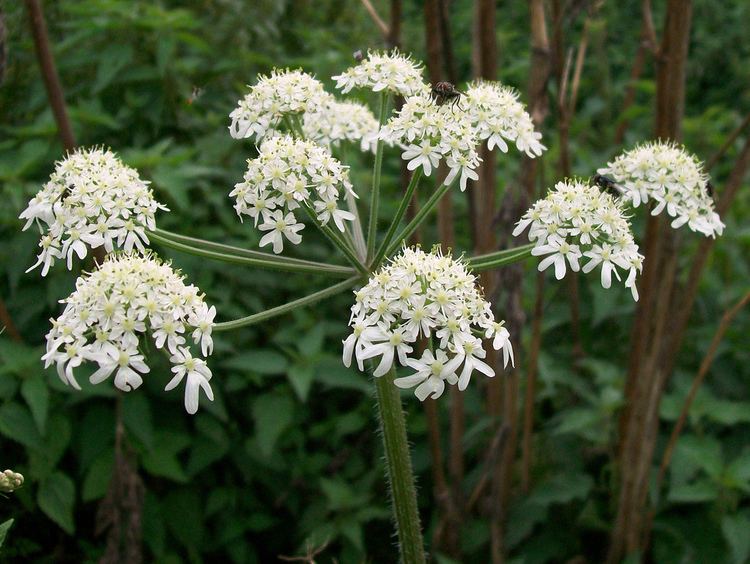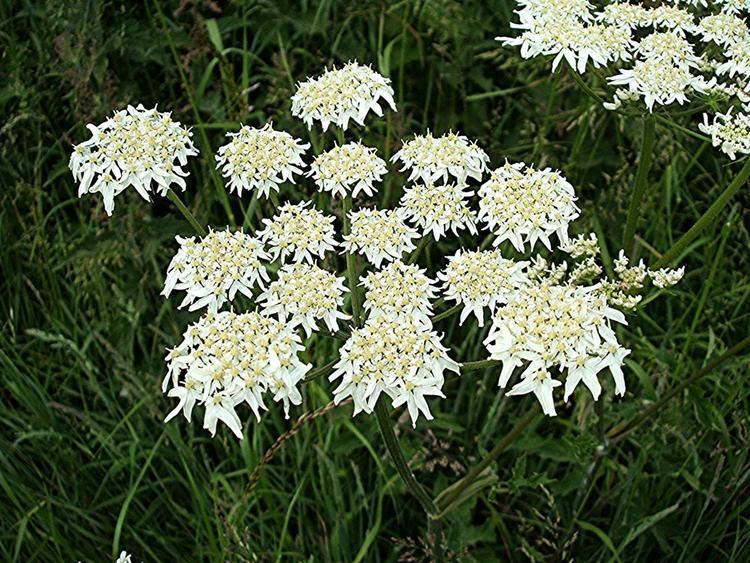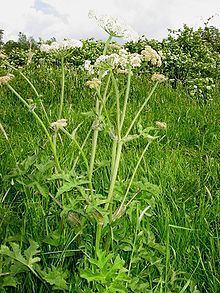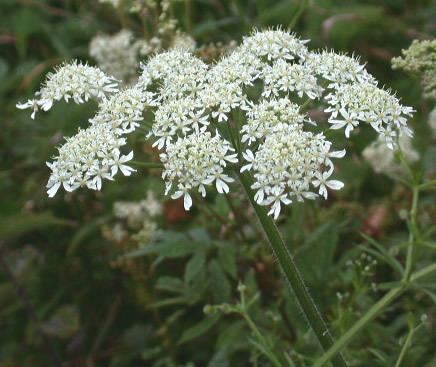Kingdom Plantae Rank Species | Genus Heracleum Higher classification Cow Parsnip | |
 | ||
Similar Cow Parsnip, Giant hogweed, Umbelifers, Cow Parsley, Herb Bennett | ||
Common hogweed heracleum sphondylium
Heracleum sphondylium, commonly known as hogweed, common hogweed or cow parsnip, is a herbaceous perennial or biennial plant, in the umbelliferous family Apiaceae that includes fennel, cow parsley, ground elder and giant hogweed. It is native to Europe and Asia. The common name eltrot may also be applied, but is not specific to this species. Umbelliferous plants are so named because of the umbrella-like arrangement of flowers they produce. The North American species Heracleum maximum (also called cow parsnip) is sometimes included as a subspecies of H. sphondylium.
Contents
- Common hogweed heracleum sphondylium
- Heracleum sphondylium
- Etymology
- Description
- Distribution and uses
- Habitat
- Subspecies
- Similar species
- References

Heracleum sphondylium
Etymology

The genus name Heracleum derives from the Greek "herákleion" and refers to the mythologic hero Heracles, while the species name sphondylium, meaning "vertebrate", refers to the shape of the segmented stem.
Description

Heracleum sphondylium reaches on average 50–120 centimetres (20–47 in) of height, with a maximum of 2 metres (6 ft 7 in). From large reddish rhizomatous roots rises a striated, ridged, hollow stem with bristly hairs. The leaves can reach 50 centimetres (20 in) of length. They are pinnate, hairy and serrated, divided into 3–5 lobed segments.

This plant has pinkish or white flowers with 5 petals. They are arranged in large umbels of up to 20 cm of diameter with 15 to 30 rays. The peripheral flowers have a radial symmetry. Flowering typically occurs between June and October.
The terminal umbels are flat-topped and the outermost petals are enlarged.

The flowers are pollinated by insects, such as beetles, wasps and especially flies. The small fruits are flattened and winged, elliptical to rounded and glabrous, up to 1 cm long. The seed dispersal is by wind (anemochory).
The characteristic pig-like smell of the flowers gives it its name.
H. sphondylium is smaller than the skin-irritating Heracleum mantegazzianum (giant hogweed). There is some apocryphal evidence that the sap from common hogweed can also produce burns and rashes. Care needs to be used when cutting or trimming it.
The small picture-winged fly Euleia heraclei is, as its name suggests, found on hogweed.
Distribution and uses
These plants have a Eurasian distribution, growing all over Europe (except Iceland), and North Africa.
In eastern European countries and especially Romania, H. sphondylium is used as an aphrodisiac and to treat gynecological and fertility problems and impotence. It is also sometimes recommended for epilepsy. However, there are no clinical studies to prove its efficacy at treating any of these problems.
Habitat
The plant is common in herbaceous places, along roads, in hedges, meadows and woods,especially in mountain areas up to 8,000 ft (2500 m) of altitude. It prefers moist, nitrogen-rich soils.
Subspecies
This species presents a large variability of the characteristics and the occurrence of many intermediate forms. In Europe there are eight named subspecies.
Similar species
The water parsnip (swamp parsnip, Sium suave), western water hemlock (Cicuta douglasii, poison hemlock) and spotted water hemlock (Cicuta maculata, spotted parsley, spotted cowbane) all have white flowers in large compound umbels, which can lead to misidentification. All water hemlock and poison hemlock are highly poisonous, but water parsnip is not. Both have clusters of small white flowers shaped like umbrellas, and have the same habitat near the shore line of lakes and rivers. Water parsnip has leaves only once compound, and water hemlock has leaves which are three times compound. Water hemlock has a large swelling at the stem base, and has bracts at the base of each small flower cluster, not at the base of the main flower head. The Water parsnip has small bracts at the base of flowers and main flower head as well. Yarrow from the Asteraceae family (Achillea millefolium) also has many small white flowers in a cluster. However the yarrow has feathery looking leaves which are pinnately separated into small narrow segments. The cow parsnips (Heracleum lanatum, Heracleum maximum) are also confused in this group with similar flower groupings. However, the cow parsnips have large, broad leaves, and an unpleasant odour.
